Kata Tjuta (The Olgas) is situated within the Uluru-Kata Tjuta National Park and located about 30kms from Uluru (Ayers Rock). Kata Tjuta means ‘many heads’. It is believed these ‘heads’ were once all one formation, however, through weathering, today Kata-Tjuta is made up of 36 boulders. These boulders consist of a conglomerate of basalt and granite, cemented by sandstone. It is this conglomerate that gives the structures their incredible, brilliant colour.
European explorer, Ernest Giles, discovered the area in 1872 and named the mounds, ‘The Olgas’ in honour of Queen Olga who was the daughter of Tsar Nicholas I. In 1985 when the Federal Government handed the title deeds to the area back to the Anangu people, they renamed the boulders, Kata Tjuta.
Kata Tjuta is sacred to the Anangu Aboriginal people. It is a place for secret men’s business and considered so sacred the Anangu women will not visit Kata-Tjuta, some will not even look at it. Non-Aboriginal people are only permitted to walk around four of the 36 boulders with the remaining boulders being restricted to the Anangu men so they can carry out their traditional ceremonies.
As you drive towards Kata Tjuta, there is a viewing platform where you can stop and admire all 36 domes from a distance. This is the only way you can put all of them in one photo as they cover an area of around 22 square kilometres. It is interesting to note that the tallest of the domes is 546 metres, some 200 metres taller than the peak of Uluru.
For visitors to Kata Tjuta, there are two available walks. The first is the Walpa Gorge Walk which is 2.6km and can be completed in around an hour and isn’t too taxing. This would be like doing an express tour where you don’t have to expend too much energy. The second option is the Valley of the Winds Walk which is 7.4km and takes around four hours to complete. This walk is pretty much an all-day option and with all its physical challenges plus factoring in the heat and the flies, you’ll feel like you’re being pushed to your limit. In for a penny, in for a pound, that is the walk we decided to do.
For the Valley of the Winds walk you need good quality walking shoes. Having no clue what we were setting ourselves up for, we didn’t pack any. Our worn-out sneakers with minimal remaining tread were totally inadequate for the irregular, rocky and sometimes steep terrain. As it had been raining, some parts of the track were completely underwater and so waterproof shoes would have been ideal. We didn’t pack any of those either so our feet squelched around in heavily soaked joggers.
The walk around the base of Uluru is level and easy underfoot. Walking around Kata Tjuta is a different experience entirely. In many sections it is quite steep, in other sections the ‘path’ is made up of loose stones and rocks, some sections are totally underwater, and other parts where the rock is steep and shiny, it can be quite slippery and difficult to get a grip.
As we were there in January, it was also extremely hot. When the temperature rises about 36C (which is very common in summer), the Valley of the Winds walk is closed. To avoid disappointment, it is recommended you plan your walk early in the day before the temperature soars.
No matter what time of the year you are there, but especially in summer, you need to have with you plenty of water. We took two litres each and we thought that would be adequate but it wasn’t. Fortunately, there are a couple of water stations along the Valley of the Winds walk where you can refill your water bottle. And don’t forget insect repellant – so many flies! And bring plenty of sunscreen. And a hat.
The Aboriginal word for drinking water is Kapi. There are signs along the walk that state the Anangu people recommend that in order to survive, you must carry and drink water along the walk. They say to avoid dehydration you need to stop and take a drink every 15 minutes and drink at least one litre of water every hour.
There is an amenities block near the carpark where both walks begin. It is worth knowing that there are no other bathroom facilities on the walks. Another challenge of the walk is learning to hold on.
We found Kata Tjuta to be well worth a visit and as this is an area you’re not likely to pass through ever again, we recommend the longer and more challenging walk. You’ll have a much more heightened, enriching and rewarding experience.
And when you arrive back at your accommodation, you’ve definitely earned that sundowner.
Verdict: A bucket-list must
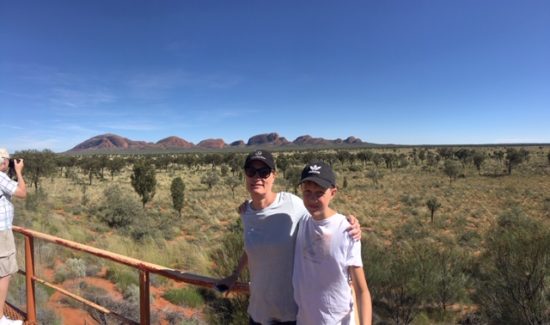
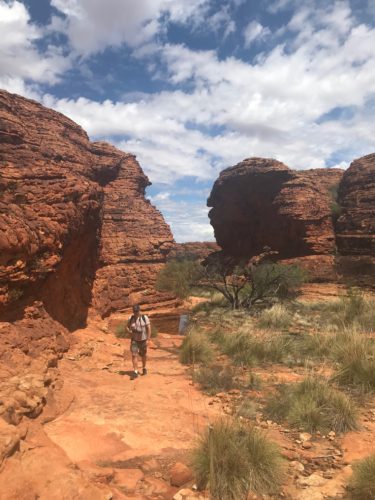
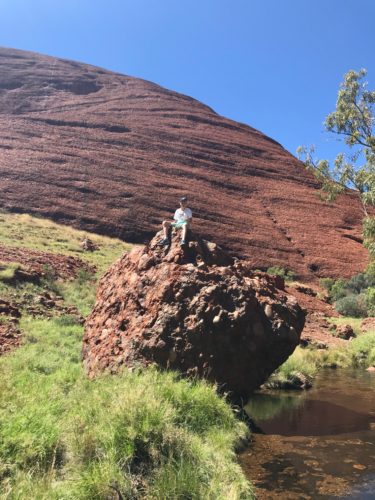
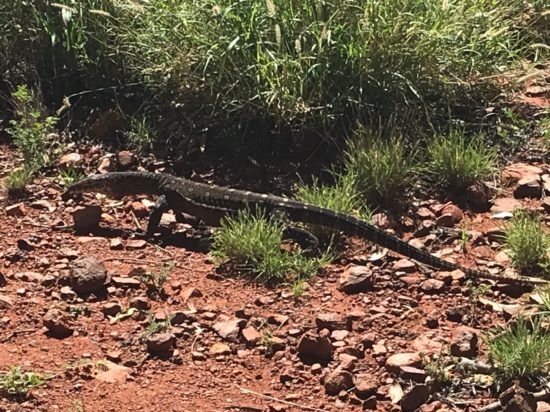
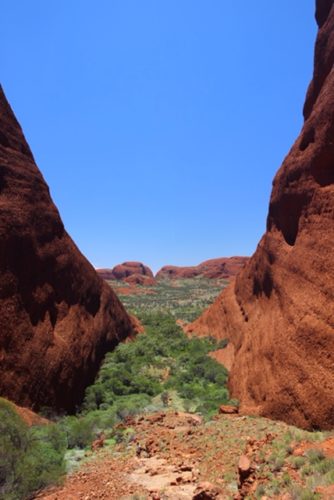
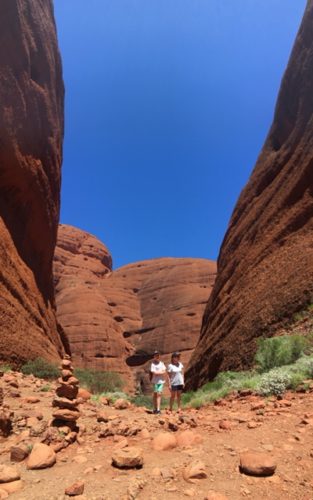
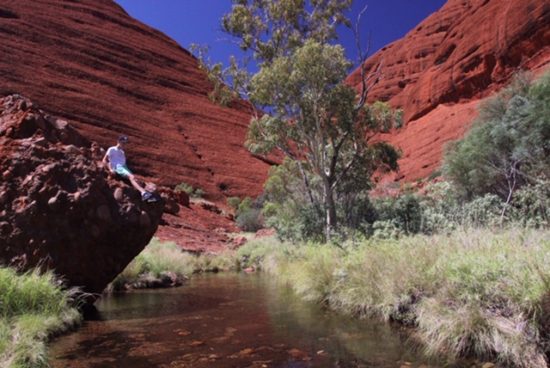
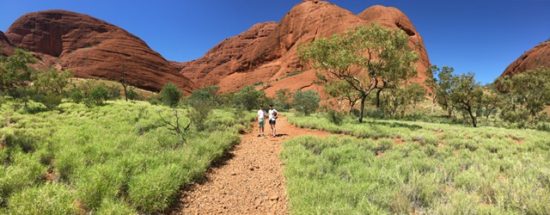
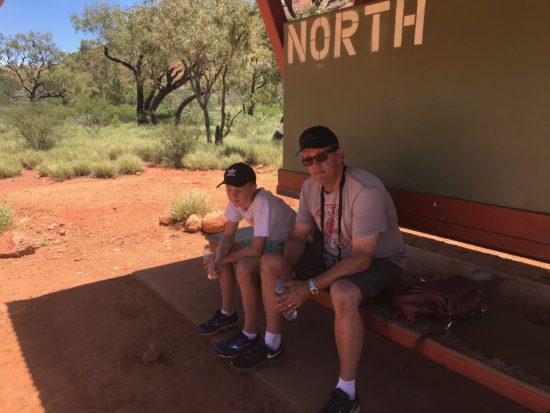
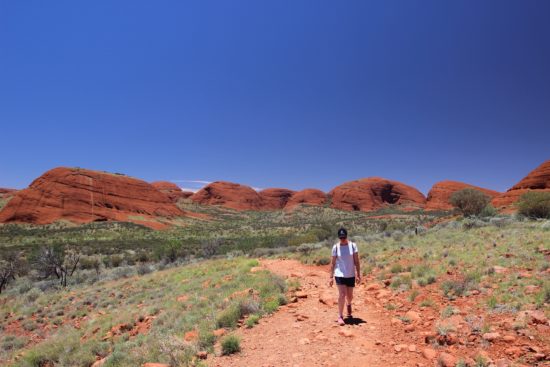

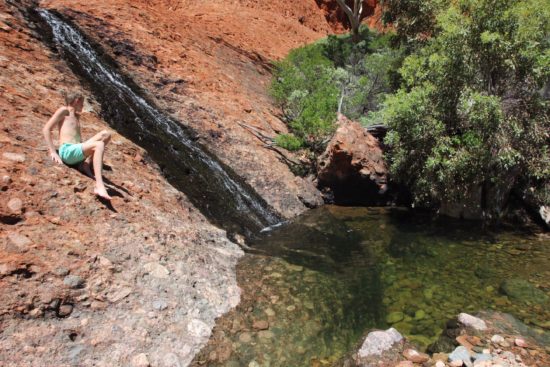
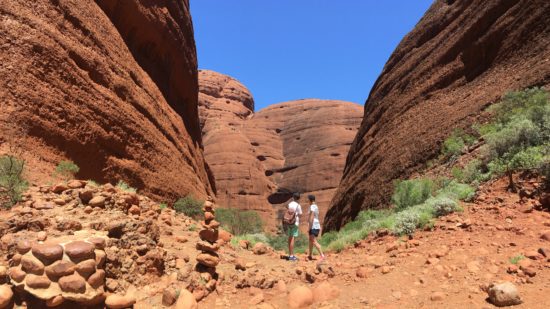
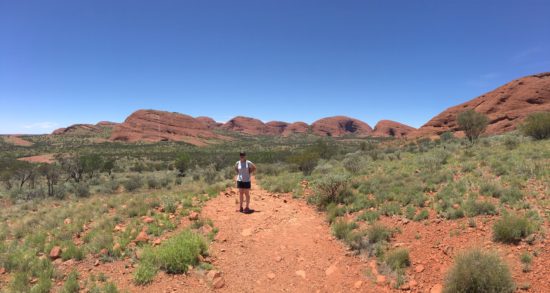
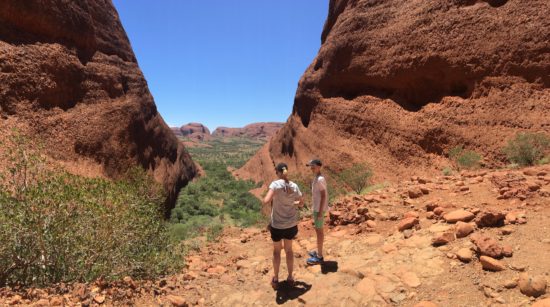



































Charlie – I feel ashamed to say I still call these mounds ‘The Olgas’ ! Thanks again for the ‘lesson’ and the marvellous photography! The truly red earth and the wonderfully deep blue skies draw one to make own plans in the foreseeable future . . . oddly love the fact that you were there in the off-season – daresay there was a lot of discomfort due to the heat, but you had so much of the area all to yourselves . . . hope you are well and happy . . .
Hi Eha, I still refer to the mounds as ‘The Olgas’ as well. It’s an ingrained habit. But I’m learning to say ‘Kata-Tjuta’ and remember it means ‘many heads’ which seems fitting. I’m glad you’re inspired to make the journey to the red centre. I truly loved it – such a special part of Oz xx
Charlie – Had not wanted to ask but just read on an US blog you are working fulltime as a RN . . . Milady I dips me hat for you being here 🙂 !
Thanks so much, Eha. I’ve just started!
Beautiful pictures! And what an interesting place. Again, I’m learning something new from you. You’re right about earning that sundowner after finishing that walk!
good job charlie. such a huge walk! sounds amazing and tough. you must be so glad to have done it. cheers sherry
It sounds like an amazing adventure! I probably don’t have the physical capability for such an extreme effort, but I’m really fascinated. I love the photos. You guys are intrepid explorers, Charlie!
It looks other worldly. Love the red against that brilliant blue sky. Congratulations to you all for completing the walk. Thank you for sharing it with us, Charlie.
Wow, what an amazing adventure to a beautiful destination! The colors of the land and sky are intensely beautiful!! Thanks for taking us along on your journey!!
Thanks Liz, and yes, in the Outback I loved the intensity of the colours.
Apart from the flies, I would have LOVED this hike.
Have a beautiful week ahead.
🙂 Mandy xo
Hi Mandy, I can’t believe we forgot to pack fly spray!